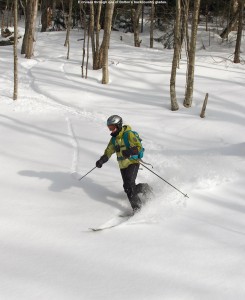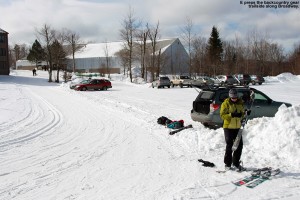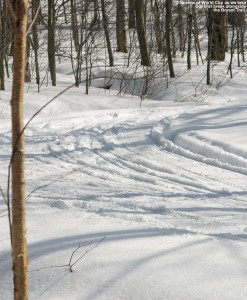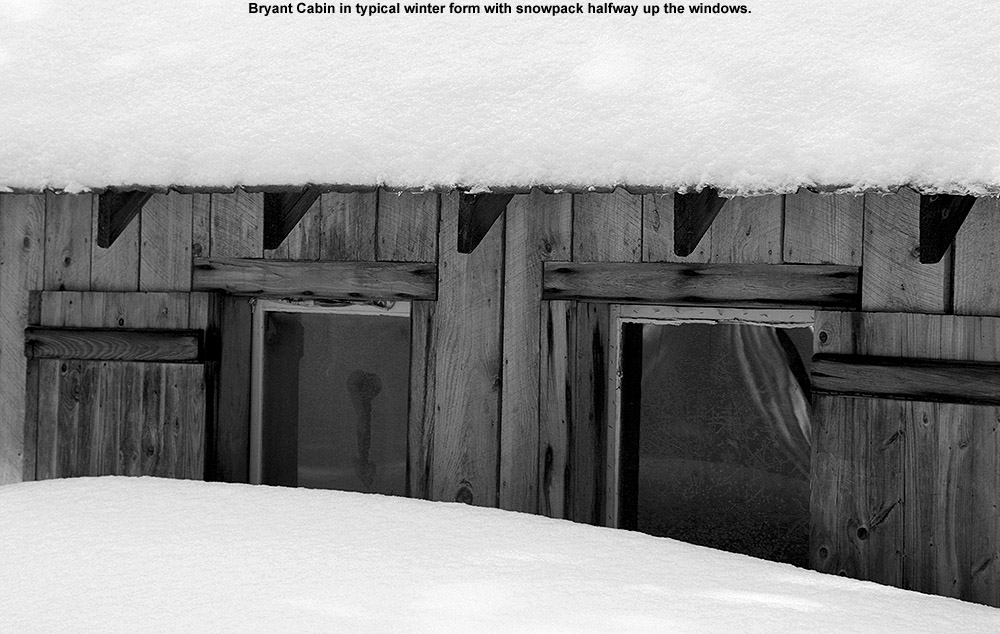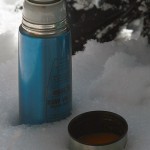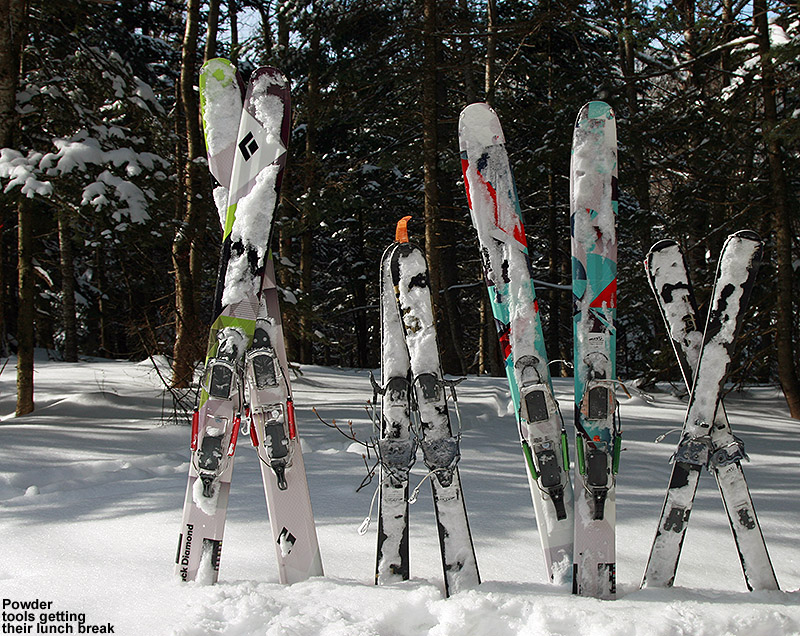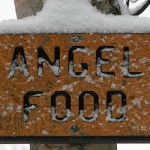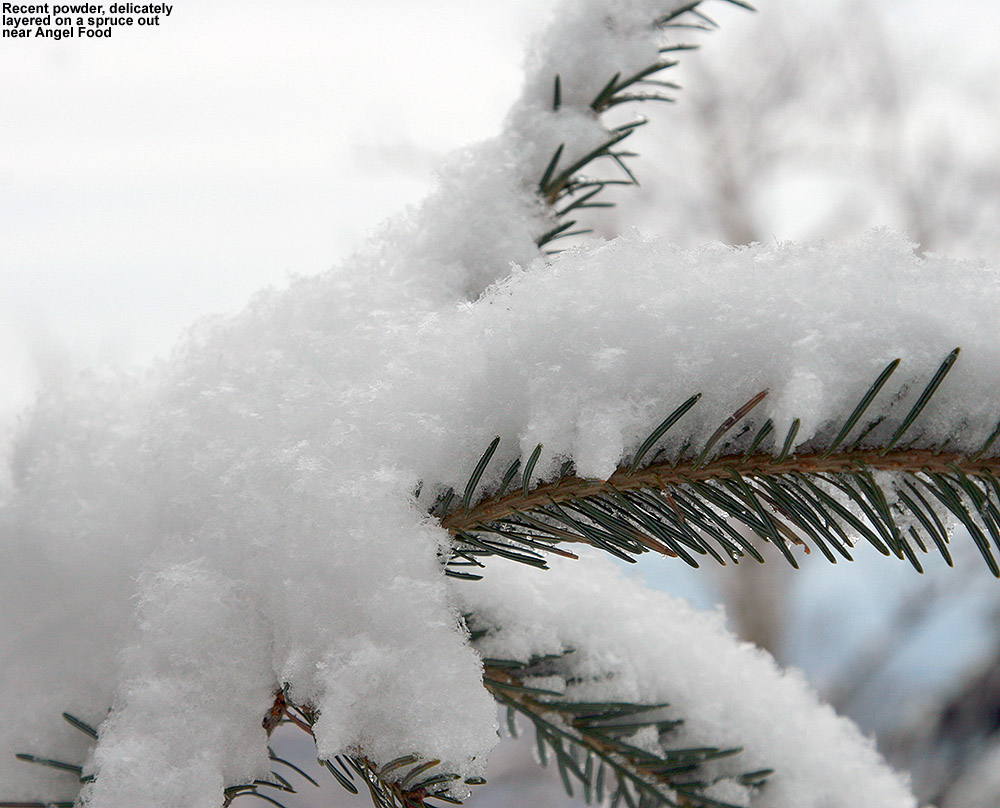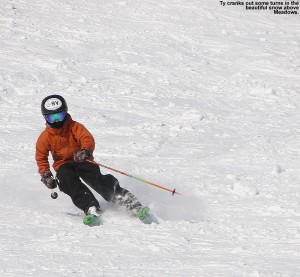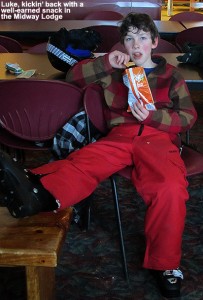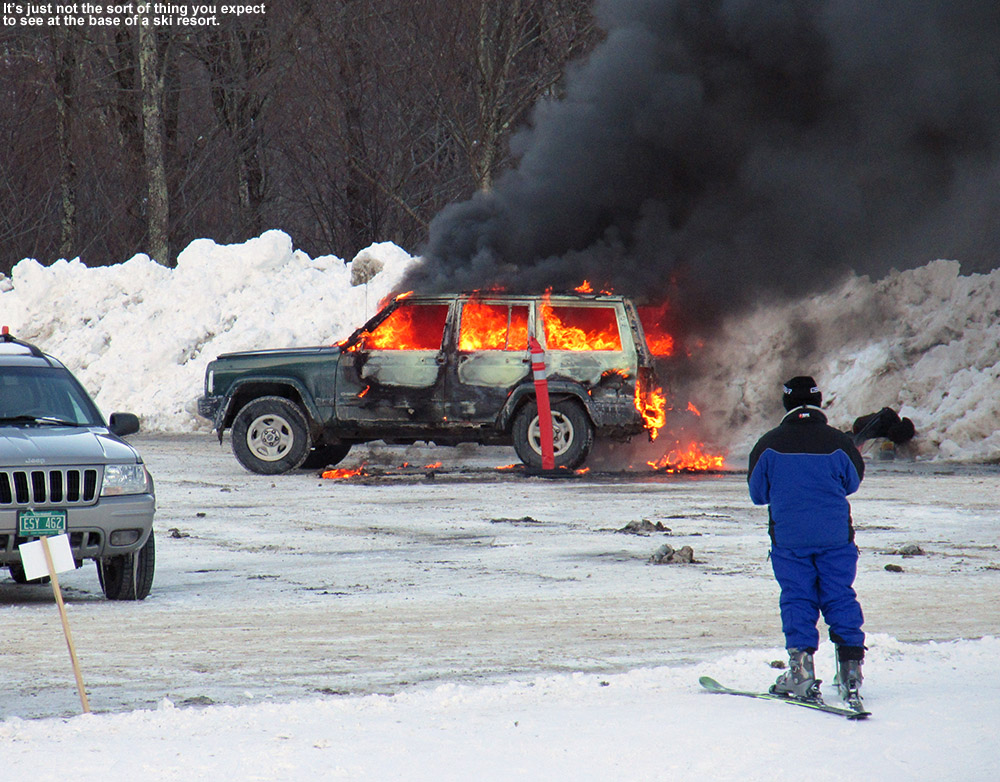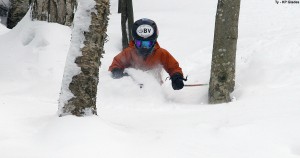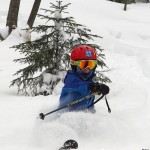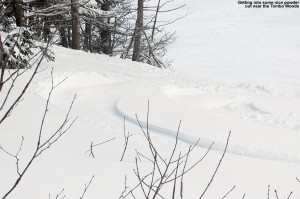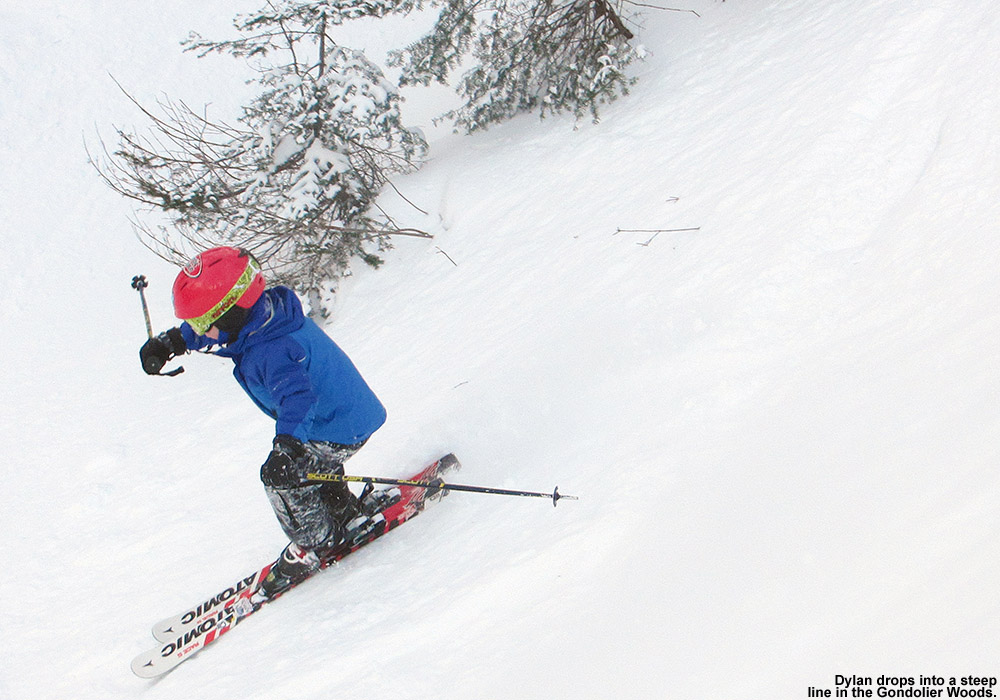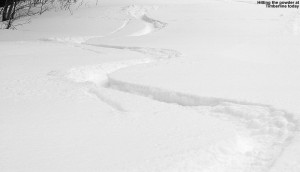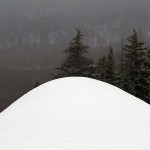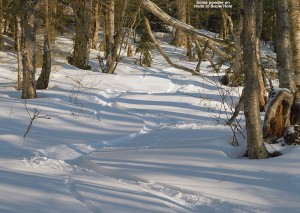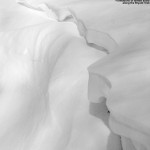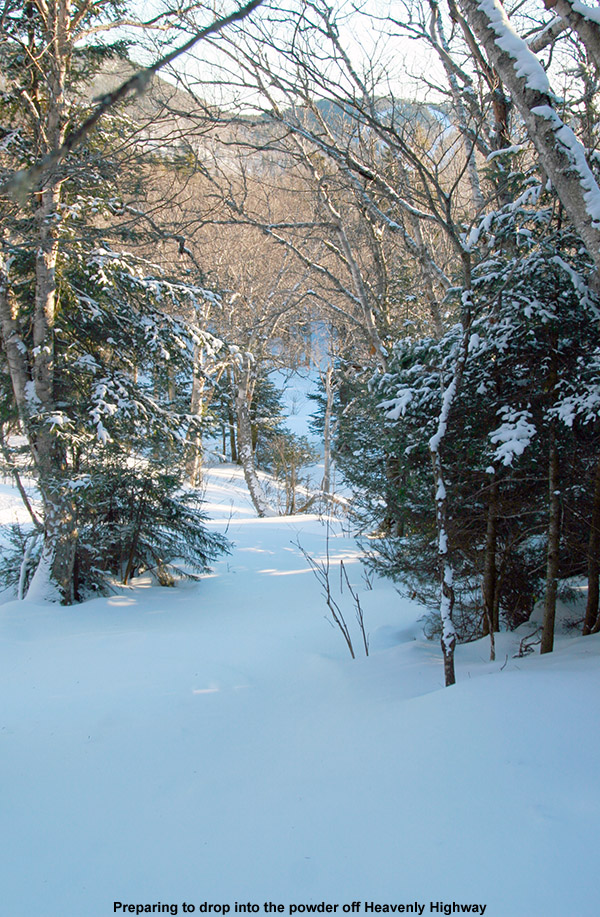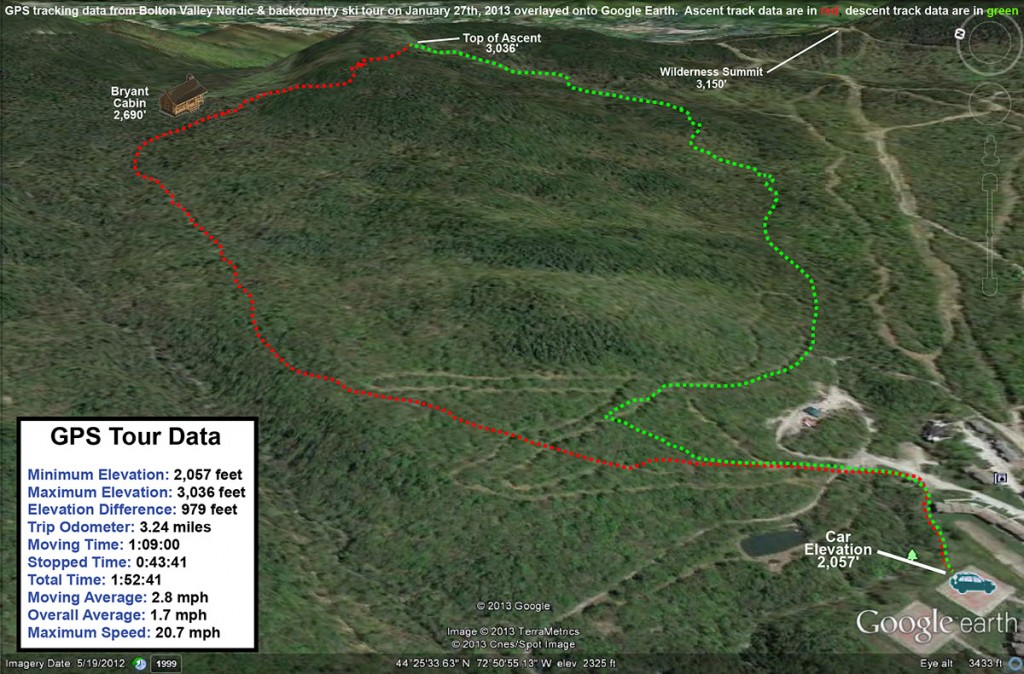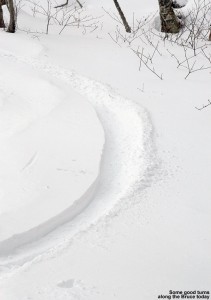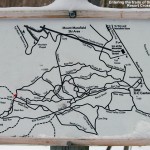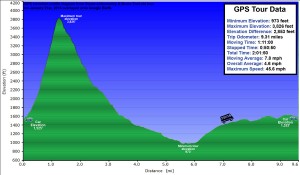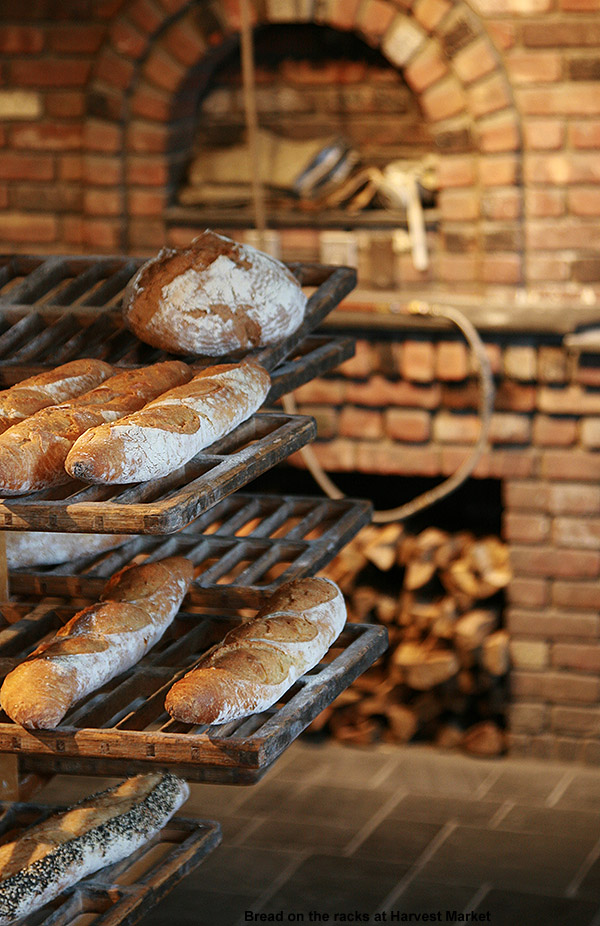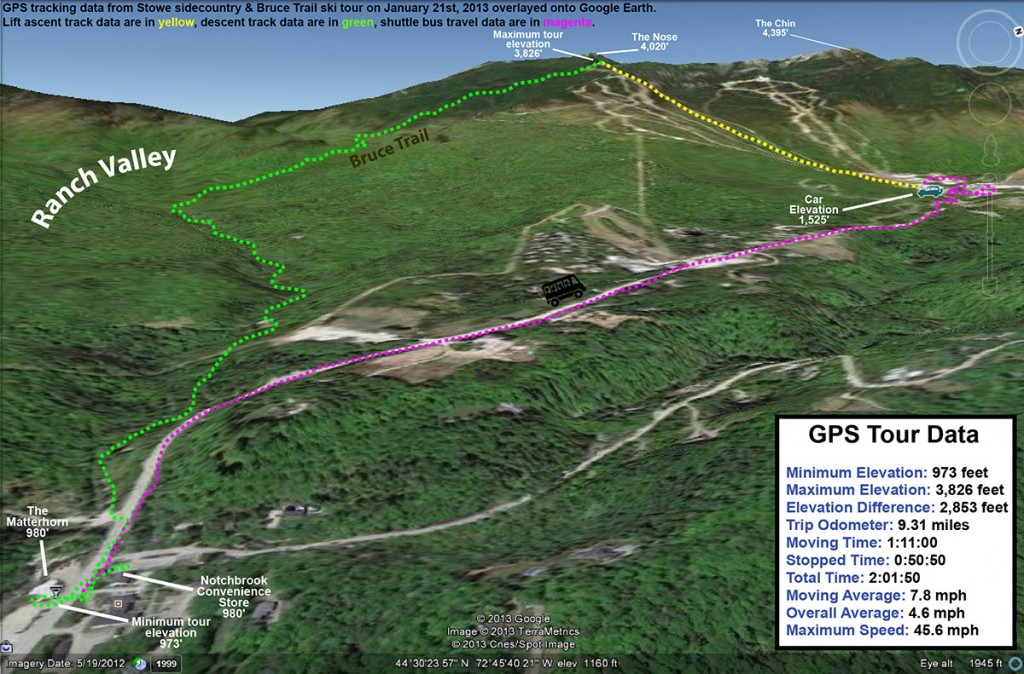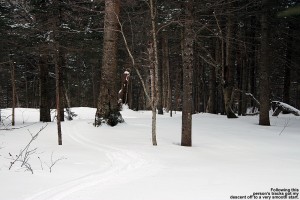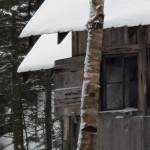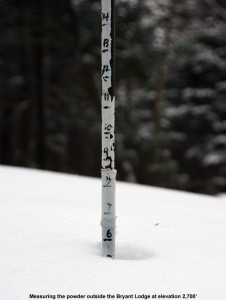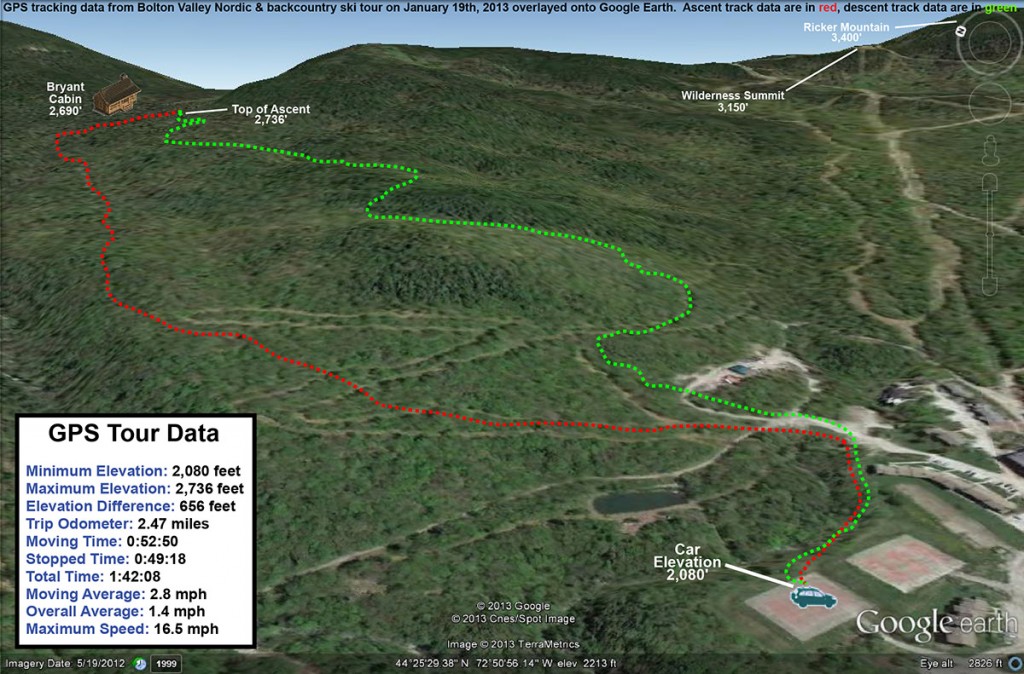
The weather was quite nice on Saturday, so we had a good family backcountry outing at Bolton Valley, but the weather yesterday was simply nasty. I contemplated heading up for a quick tour, but when I saw that the Bolton Valley Village temperature was at 3 F around midday, I wasn’t all that inspired. When I checked again in the afternoon, I saw that it had actually dropped a degree to 2 F. As if the cold temperatures weren’t enough, there was a hefty wind for good measure, and it was strong enough that the Vista Quad seemed to be closed for much of the day. With that going on outside, it was extremely nice spending much of the day getting things done inside instead.
“…the powder was very
much like what we found
on Saturday – a general
8 to 12 inches, and there
was no internal melt layer
up at that elevation.”
Today’s temperatures were definitely expected to improve though, so after I took care of some work in the morning, I planned on a short tour up at Bolton Valley in the afternoon when the day’s warmth would be at its peak. Under a cloudless sky, temperatures were up into the mid 20s F in the valleys, and close to 20 F even up at 2,000’ when I arrived in the Village in the early afternoon. There was still plenty of wind though, so Mother Nature didn’t seem to want to let that go for some reason. Fortunately, the winds weren’t strong enough to shut down the Vista Quad (yet), and that let me proceed with my planned tour.
For today, my goal was to explore the drainage that dropped off behind the Bolton Valley Wind Turbine and led down to Goose Pond. From the pond, I planned to hook up with the Woodward Mountain Trail, connect back to the Vista Summit, and make a front side run back to the Village. The wind was a little brisk as I prepared my gear at the car, so I went with my thicker fleece layer in anticipation of what might be going on up above 3,000’. The resort was definitely winding down in activity from the holiday weekend, and there were only a few people around as I boarded the Vista Quad. It was my first time on the Vista Quad this weekend, and the lift ride was certainly enlightening, albeit somewhat discouraging. The combination of holiday traffic, but probably even more so the strong westerly winds, left the snow surfaces pounded flat, flat, flat. Everything looked packed out; even the trees along the Vista Quad Lift Line seemed to have lost a good part of their fluffy disposition. The resort had that look of an “old snow” scene, with the trails stripped of loose snow, the tree branches devoid of fluff, and even slick patches visible here and there. I was thankful that I was heading to the leeward side of the mountain, but the snow seemed so beaten down it seemed hard to imagine that I’d find fluff even there. The lift slowed down and even stopped a few times on my trip up, presumably because of the wind, and I was thankful that I was only planning one ride because I wondered how long they’d be able to keep it turning.
Once at the Vista Summit I headed over to the wind turbine, then passed underneath it into one of the openings in the forest. Above the noise of the wind itself, the turbine was cranking away with its own sound of spinning blades. It was really moving in winds that had to be 25 to 30 MPH, and I was happy to see it free of rime and actually doing its job. The noise of the turbine blades in the wind was substantial enough that it actually took a while to fade as I dropped into the drainage and began my descent, but after a few minutes of navigating downward the noise diminished to just the wind itself. Finding a route through the gully was actually quite easy, as there were obvious open areas that could be connected. I can’t say that I found one continuous line for skiing, but there were enough open areas to make it enjoyable. A little trimming to connect those areas would make for an even better descent. At first I was concerned about the scoured and wind-packed snow that presented itself on the initial drop from the turbine, but that dissipated and only reappeared in a few exposed spots lower down. Other than that, the powder was very much like what we found on Saturday – a general 8 to 12 inches, and there was no internal melt layer up at that elevation. The forest I encountered was a mixture of evergreens with a few hardwoods and a touch of brush here and there, and as I approached the pond down at around 2,800’ it became one of those dark spruce groves that permit little understory growth.
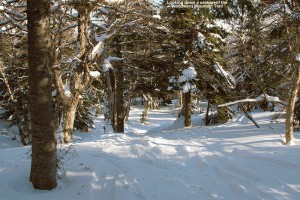
Down in the open area of the pond, I found myself exposed to the wind, and it was really ripping. What I observed was a rather austere, winter scene, but not quite the peaceful place it might have been without the incessant wind. I stayed just long enough for a couple of pictures before I retreated into the shelter of the spruce forest. I put on my skins for the ascent, and found an easy route through the spruce; the trees were tall and the only hindrance was the occasional presence of dead lower limbs that hadn’t yet fallen off. With the help of my GPS, I hit the Woodward Mountain Trail in about 10 minutes, and my pace accelerated at that point because I found that there was a skin track that others had used for ascent. There were a few ski tracks on the trail itself as well, but it hadn’t been used too heavily. It was easy to see that the trail was designed well though, because it was often just on the leeward side of the ridge and held a lot of powder. The trail is rather wide in spots, up to 50 feet or more, so I’m sure the turns through there are a great way to start off a tour of the entire trail down to Waterbury Reservoir.
Just before finishing my ascent and emerging back out at the Vista Summit, I hit the fire tower and headed up to take in the view. The wind was intense up top, probably 40-50 MPH, but I was able to get a few photos of the great views in every direction. I quickly got down, took my skins off my skis for the front side descent, and to my surprise (although I guess with those winds not too surprising) when I emerged at the Vista Summit I saw that the Vista Quad was entirely shut down. It was almost spooky how deserted the summit looked for that time of day, but I basically had the whole upper mountain to myself at that point. I headed over toward Cobrass for my descent, and I’m not sure how long the lift had been closed, but the trails had already received a resurfacing due to snow sifting in on the wind. The surface of Cobrass was actually quite nice; it was very easy to dig with my edges, even on my fat skis, and I enjoyed my solo descent.
I headed into the Villager Trees and up “The Crack” to the top of “The Knob” to get in some additional powder turns on my way back to the Village. Folks have been busy in that area in the off season, because I could see some new lines in there that looked like fun. I stuck to a line that I knew, and nobody had been in that area yet so the tracks were fresh. The powder was generally good, although there were some spots where the wind had gotten to it, and I could really feel the assistance I got from the rocker and width of my AMPerages in handling that crust. Down in the lower sections of the trees there had been a lot more traffic, and combined with the wind I had to do a little more work to find the best untracked snow. Those lower sections seemed to fly by though, as I found myself going fast through areas with packed snow and less powder.
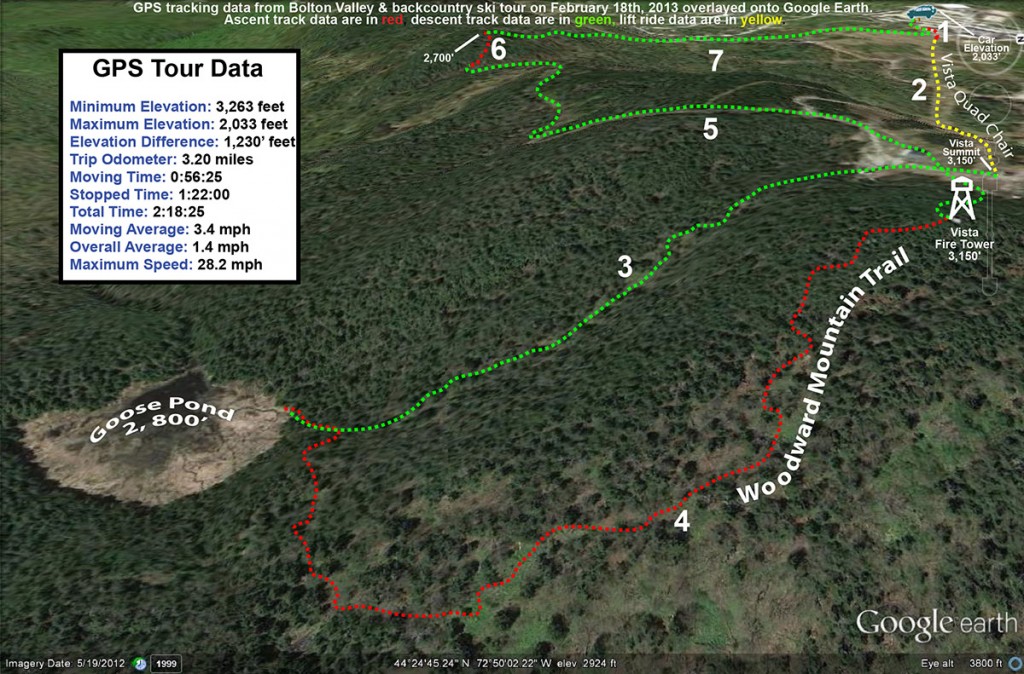
I finished off my run, stopped in the main base lodge briefly, and then headed to the car. I was surprised to find that the wind had virtually disappeared down at the Village level, despite the way it was cranking along up high. The lower mountain lifts were running, but many folks seemed to be winding down their day as it was getting toward that 4:00 P.M hour. It was in the low to mid 20s F at the base – warmer than it had been when I arrived, and it felt very nice without the wind. It had definitely been cold up high though – my cheeks could still feel that bite that comes along with cold winter air. In terms of upcoming weather, we’ve still got a good chance for some upslope snow during the midweek period. That’s good, because the lift-served slopes could really use a freshening based on what I saw today.










